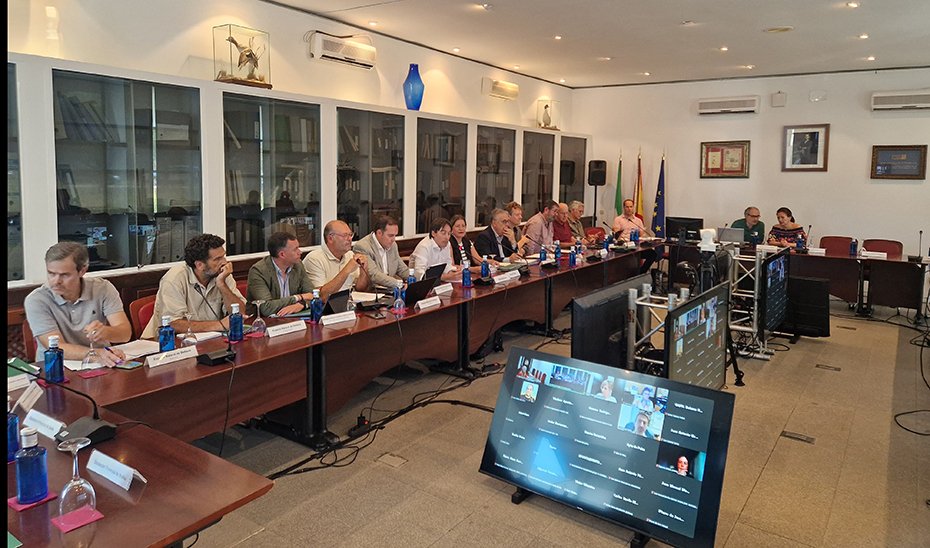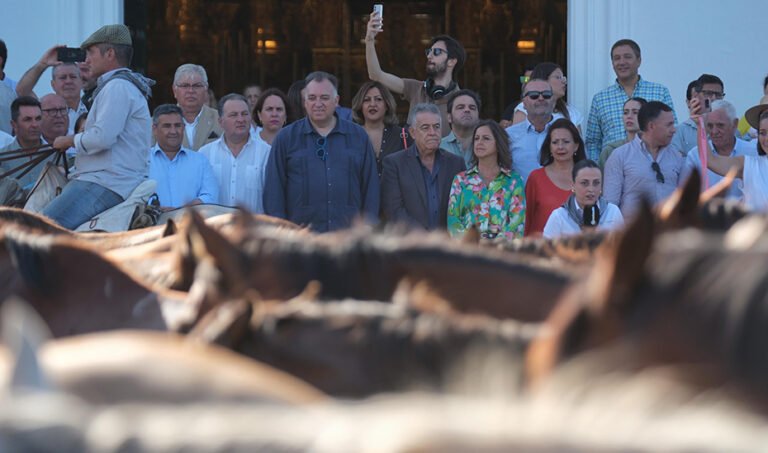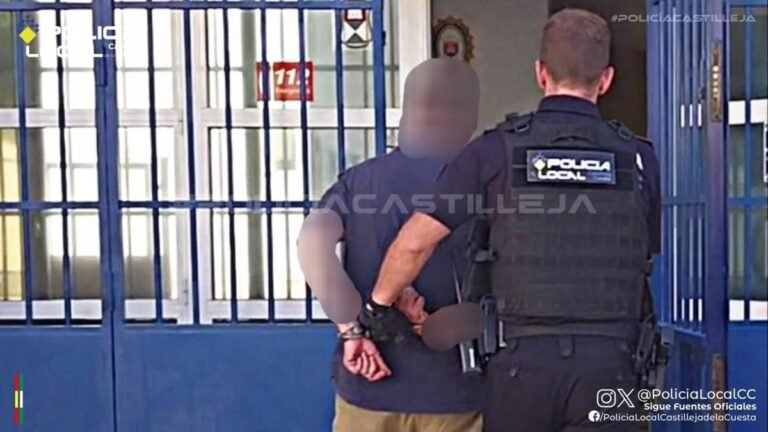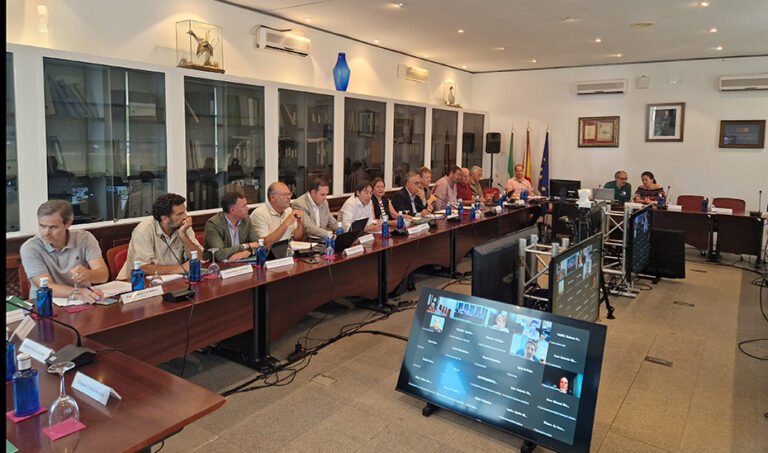
The Participation Council of the Doñana Natural Space has met at the El Acebuche Administrative Center in Matalascañas, Almonte (Huelva), where the 2024 Activities and Results Report of the Doñana Natural Space was unanimously approved. It was also proposed to the Ministry for the Ecological Transition and the Demographic Challenge (MITECO) to complement or update the risk assessment of the ‘Sondeo Marismas-3NE’ project for possible direct or indirect impacts on groundwater bodies and the Doñana Natural Space, and therefore, the Doñana Special Conservation Zone.
Likewise, during the meeting, chaired by Enrique Mateos and with the participation of the Deputy Minister for Sustainability and the Environment, Sergio Arjona, it was agreed that the central government would inform the European Commission of the authorization procedure for the Marismas-3NE survey, whose environmental assessment supporting the initial gas storage project dates back to 2010, in order to strengthen transparency and compliance with community environmental regulations. In parallel, it was also suggested to convey this information to the UNESCO World Heritage Centre for their knowledge and, if necessary, review, within the framework of the International Union for Conservation of Nature (IUCN) recommendations on environmental assessments applicable to World Heritage properties.
Lastly, it was agreed to request from MITECO that in the future, the Doñana Natural Space Participation Council be informed of the actions taken related to the agreement adopted in the Plenary Session. The ‘Sondeo Marismas-3NE’ project is linked to underground natural gas storage in the Doñana environment and was included as an information point in the Participation Council Plenary. These proposals are aimed at maximizing environmental protection guarantees for the Doñana Natural Space.
Additionally, unanimous reports were approved on the ‘Project for the recovery of streams in the Rocina area’ and on the ‘Project for the recovery of lagoons’, both in the municipality of Almonte.
852 million mobilized by the Junta for the Doñana Agreement
During the interventions, the Deputy Minister for Sustainability and the Environment, Sergio Arjona, provided a brief overview of the implementation status of the Doñana Agreement, signed between the Andalusian Government and the Spanish Government. He highlighted that since the signing, more than 58% of the committed funds have been mobilized, representing over 428 million euros in specific actions in strategic sectors such as fishing, agriculture, forestry, natural environment, and hydraulic infrastructures.
«Thanks to the strong drive of the Junta, we have mobilized over 852 million euros, exceeding the initial commitment,» he emphasized, stressing that these investments are translating into real improvements for biodiversity, sustainability, and socio-economic development in the Doñana influence area.
Likewise, he shared a hopeful outlook on the evolution of the Iberian lynx in Andalusia, highlighting that the population counted in 2024 has reached 836 individuals, 78 more than the previous year. Arjona valued this growth, especially significant when compared to the numbers from 2019, when there were 463 individuals. «Andalusia has doubled the population in just five years, demonstrating the effectiveness of conservation strategies implemented,» he noted.
He also highlighted the population count in the Doñana-Aljarafe area, which reaches 133 individuals, including 33 females, the highest known record. In this line, 75 individuals in total, including 38 cubs, were detected within the Doñana Natural Space. Additionally, at least seven litters with 18 cubs were located, with three litters situated within the Natural Space with 6 cubs.
240,000 waterbirds after this year’s rains
Regarding the current state of the Doñana marshes, the Deputy Minister emphasized the positive impact of the abundant rainfall recorded since September, restoring a view of the park not seen in over a decade. «We are facing the first wet year since 2010, with almost 100 liters per square meter above average,» he detailed, pointing out that March was the rainiest month on record. Thanks to this water cycle, over 28,000 hectares of the National Park and 11,000 of the Natural Park were flooded, with places like the Vetalengua lucio still reaching depths of up to 80 centimeters. This scenario has also favored the presence of over 240,000 waterbirds of 87 different species. «It’s a historic episode that renews our confidence in the ecosystem’s recovery capability,» he expressed.
Arjona also highlighted the significance of the recent acquisitions of the ‘Veta la Palma’ and ‘Tierras Bajas’ estates, adding 8,700 new hectares to the Andalusian public heritage with an investment of around 80 million euros. This operation will enable «a more coherent and comprehensive management of the Doñana ensemble.»
The Deputy Minister also congratulated the Doñana Natural Space staff for the exemplary development of the ‘Plan Romero’ and the traditional ‘Saca de las Yeguas’, two emblematic events reflecting the close relationship between culture, tradition, and sustainability. Finally, he valued the collaboration agreement signed with the González-Gordon family, owners of the ‘El Puntal’ and ‘El Lobo’ estates, as an example of public-private cooperation for the active conservation of the National Park. «This agreement reinforces our commitment to participatory and sustainable management, focused on ecosystem restoration, habitat improvement, and the protection of key species such as the Iberian lynx or the imperial eagle,» he concluded.
The plenary session was attended by the Director-General of Protected Natural Spaces, José Enrique Borrallo; the Director of the Doñana Natural Space, Juan Pedro Castellano; the Commissioner for the Doñana Agreement, Jaime Mora; and the Territorial Delegate for Sustainability and the Environment in Huelva, Pedro Yórquez. Mayors from municipalities located in the Natural Space, representatives from the Ministry for the Ecological Transition and the Demographic Challenge, the Biological Station of Doñana, universities, environmental associations, and the Andalusian Hunting Federation, among other authorities, also participated.






